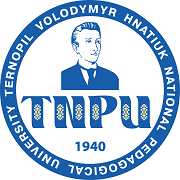URBANIZATION PROCESSES IN TERNOPIL REGION AS AN INDICATOR OF THE REGION’S ECONOMIC DEVELOPMENT (1950S)
DOI:
https://doi.org/10.32782/2307-7778/2025.1.6Keywords:
urbanization, Ternopil region, economic development, urban population, administrative-territorial changesAbstract
The aim of the study is a comprehensive analysis of urbanization processes in the Ternopil region during the 1950s as an indicator of the region’s economic development, focusing on the impact of indus- trialization, administrative changes, and demographic trends on the formation of the urban structure and the socio-economic potential of the region. Research Methodology. To comprehensively study urbanization pro- cesses in the Ternopil region in the 1950s, a combination of historical-statistical, demographic, and socio-eco- nomic analytical methods was applied. The core of the research was the analysis of archival documents,including materials from statistical offices, decisions of executive authorities, as well as data from all-Unionpopulation censuses. Statistical analysis made it possible to track the dynamics of urban population numbers,considering natural and mechanical growth as well as the influence of administrative-territorial changes on the urban demographic structure. Particular attention was given to examining the interrelation of urbaniza- tion processes with the region’s economic development through analysis of industrial growth, investments inthe construction sector, and the formation of social infrastructure. Quantitative data were supplemented by qualitative analysis, including interpretation of political and administrative decisions affecting urbanization trends. This comprehensive approach ensured an integrated understanding of urbanization processes as a significant indicator of the economic development of the Ternopil region. Scientific Novelty. The article pro-vides a comprehensive analysis of the relationship between urban population growth rates and the region’s economic development in the context of administrative-territorial transformations and expansion of industrial infrastructure. The study investigates mechanisms of urban social infrastructure formation that emerged in response to the needs of labor collectives, particularly in the sugar industry, which were previously underex-plored in academic research. It identifies peculiarities of population and labor force statistical accounting that influenced official demographic and workforce dynamics, thereby expanding understanding of socio-economic processes in the region. Overall, the work supplements existing views on urbanization as a complex socio-eco- nomic phenomenon and proposes an approach to assessing regional development based on the interaction of demographic and economic factors. Conclusions. Urbanization processes in the Ternopil region during the 1950s were not only a demographic phenomenon but also an important indicator of the region’s economicdevelopment. The analysis showed that the growth of the urban population was closely linked to industrial development, especially the expansion of the sugar industry and the infrastructure of the regional center, Ter- nopil. Administrative-territorial changes, expansion of city boundaries, and annexation of rural settlementssignificantly influenced official population statistics and should be considered when evaluating urbanizationdynamics. Additionally, certain peculiarities of statistical accounting were revealed, including double count-ing of workers, which could affect the formation of official indicators. The growth of the urban populationstimulated the development of social infrastructure, creating favorable conditions for further economic growthand improving living standards in the region. At the same time, the pace of urbanization varied depending on the size of the cities and the degree of their economic activity.
References
Скляр В. М. Етнiчний склад нaселення Укpaїни 1959–1989 pp.: етномовні наслідки poсiйщення. Kиїв : Bид. центp «Пpoсвiтa», 2008. 392 c.
Держархів Тернопільської обл. Ф. Р-1. Оп. 3. Спр. 279. 23 арк.
Держархів Тернопільської обл. Ф. Р-1. Оп. 3. Спр. 275. 87 арк.
Держархів Тернопільської обл. Ф. Р-1. Оп. 3. Спр. 953. 84 арк.
Держархів Тернопільської обл. Ф. Р-1. Оп. 3. Спр. 31. 53 арк.
Держархів Тернопільської обл. Ф. Р-1. Оп. 2. Спр. 300. 87 арк.
Держархів Тернопільської обл. Ф. Р-1. Оп. 3. Спр. 205. 91 арк.
Держархів Тернопільської обл. Ф. Р-1. Оп. 3. Спр. 566. 55 арк.
Держархів Тернопільської обл. Ф. Р-1. Оп. 3. Спр. 533. 60 арк.
Держархів Тернопільської обл. Ф. Р-1. Оп. 3. Спр. 634. 29 арк.
Держархів Тернопільської обл. Ф. Р-1. Оп. 3. Спр. 570. 201 арк.
Держархів Тернопільської обл. Ф. Р-1. Оп. 3. Спр. 756. 88 арк.
Держархів Тернопільської обл. Ф. Р-1. Оп. 3. Спр. 780. 58 арк.
Держархів Тернопільської обл. Ф. Р-1. Оп. 3. Спр. 753. 27 арк







